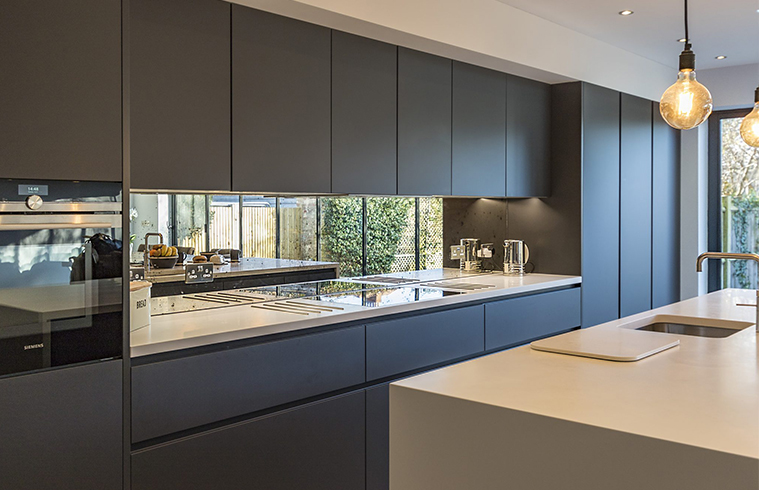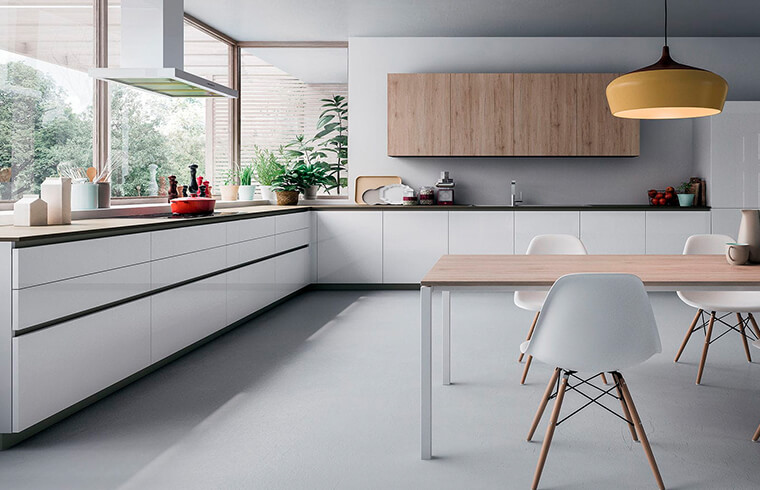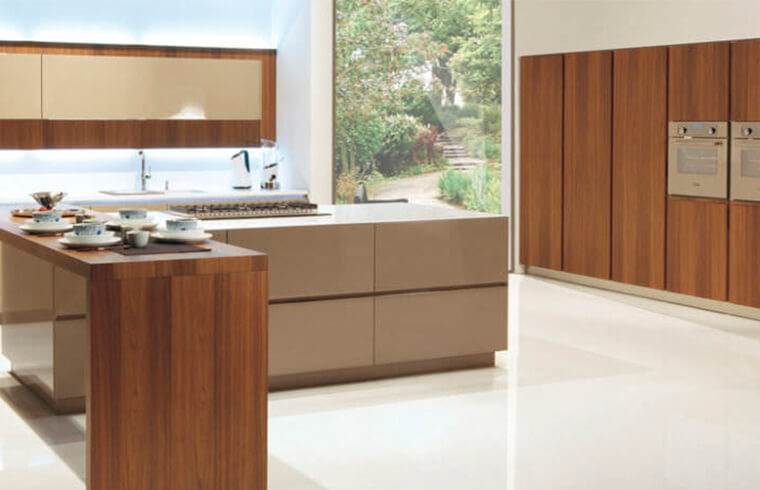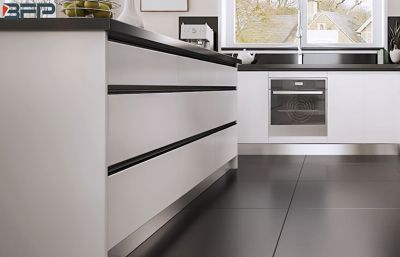The kitchen is one of the most important spaces in any home, and cabinets play a key role in both function and style. For first-time remodelers or new home builders, understanding the cost of kitchen cabinets installed is essential to staying within budget and making smart choices.
Many homeowners are surprised by how much cabinetry impacts overall project costs. The final price isn’t just about quantity — it also depends on cabinet type (stock, semi-custom, or custom), materials, construction quality, and installation complexity.
This guide breaks down all the factors that influence cabinet costs, from size and layout to materials and labor. Whether you're planning a budget-friendly update or a high-end renovation, this article will help you understand your options and make confident, informed decisions.
By the end, you’ll have a clear picture of what affects pricing and how to choose the right cabinets for your needs and budget.

When planning your kitchen cabinet project, it’s important to understand that cost is about more than just the number of cabinets. What they're made of, how they’re built, and who installs them all play a role in the final price. Let’s break down the key factors.
There are three main types of cabinets:
Stock Cabinets: Pre-made in standard sizes and styles. Most affordable and fastest to install — ideal for tight budgets or quick updates.
Semi-Custom Cabinets: Offer more choices in finishes, door styles, and layouts. A good balance between cost and customization.
Custom Cabinets: Built specifically for your space and style. Most expensive, but best for unique kitchens or high-end designs.
Your choice should match both your needs and budget.
Cabinet costs are often based on linear footage— how many feet of cabinetry you need. Naturally, larger kitchens cost more.
Layout also affects price. For example:
L-shaped or U-shaped kitchens may need more corner cabinets, which are harder to build and install.
Simple straight-line layouts usually cost less.
Knowing your kitchen size and layout helps you get accurate quotes.
Two main construction styles:
Framed (Face-Frame): Traditional look with a wood frame around the front. Usually more affordable.
Frameless: Sleeker, modern appearance with thicker panels for support. Often more expensive, but offers more interior space.
A third option —Inset Cabinets— fits doors inside the frame for a clean, built-in look. These require precise craftsmanship and tend to be the most costly.
Different materials affect both appearance and price:
Solid Wood cabinets: Durable and timeless, but expensive.
Wood Veneer cabinets: Looks like real wood at a lower cost.
Laminate cabinets: Affordable and easy to maintain, with many design options.
Acrylic & Stainless Steel: Modern finishes, often pricier.
Choose based on your style, durability needs, and budget.
Even the best cabinets need proper installation. While DIY is possible, hiring a professional ensures accuracy and safety — especially for custom or semi-custom cabinets.
Installation typically ranges from $50 to $450 per linear foot, depending on complexity and location.
If you lack experience, investing in a pro can prevent costly mistakes.

Kitchen cabinets can be a significant part of your renovation budget — but that doesn’t mean you have to overspend. With a bit of planning and smart decision-making, it’s entirely possible to get high-quality cabinets at a more affordable price. Here are some practical tips to help you save money without sacrificing style or functionality.
Not every kitchen needs full custom cabinetry. In fact, going with a less expensive option like stock or semi-custom cabinets can save you thousands while still giving you a great look.
Stock Cabinets: are the most affordable and quickest to install. If your kitchen layout is standard and you don't need special sizes or features, these can be an excellent value.
Semi-Custom Cabinets: offer more flexibility in terms of finishes and design options. They’re a good middle ground if you want some customization without paying top dollar.
Only consider Custom Cabinet if you truly need unique dimensions or specialized storage solutions. Otherwise, they may add cost without adding real value.

Revisions during installation can quickly drive up costs. Measure your space carefully from the start, and finalize your design before placing any orders. This includes:
Deciding where sinks, appliances, and outlets will go
Confirming cabinet heights and widths
Choosing finishes and hardware early
Making changes after the cabinets arrive or installation has begun often means extra labor time, return fees, or even complete reordering — all of which eat into your budget.
Don’t settle for the first quote you receive. Get estimates from several cabinet suppliers and contractors. Be sure each quote includes:
The type and quality of materials
Labor costs (if included)
Any additional fees (delivery, disposal, etc.)
When comparing, focus not just on the total number but on what each option includes. A slightly higher price might mean better craftsmanship or longer-lasting materials — which could save money in the long run.
If you're handy with tools, doing part of the work yourself can help cut costs. Tasks like:
Removing old cabinets
Preparing walls
Cleaning up after installation
Just like with furniture or appliances, timing your purchase can make a big difference in price. Many cabinet dealers offer discounts during slower periods of the year or during major holiday sales events such as:
January–February: Post-holiday slow season
June–July: Mid-year clearance events
November–December: Black Friday and end-of-year deals
Purchasing during these times can help you secure better pricing or added features at no extra cost.
Custom sizing adds complexity and increases both material and labor costs. Whenever possible, choose cabinets that fit within standard dimensions. This helps reduce fabrication time and avoids the premium associated with one-off designs.
If your kitchen layout is unusual, try to adjust the design to accommodate standard-sized units rather than creating fully custom pieces.

When it comes to choosing kitchen cabinets, many homeowners fall into the same traps — often because of misleading information or assumptions. Whether you're updating an old kitchen or building a new one from scratch, understanding these common misconceptions can help you make smarter decisions and avoid unnecessary expenses.
While it’s true that high-end cabinets often come with premium materials and craftsmanship, price alone isn’t always a reliable indicator of value. Some expensive cabinets may simply have brand-name markups or overly complex designs that don’t add real function.
Instead of focusing solely on price, evaluate what you’re actually getting:
Is the material durable and suitable for your lifestyle?
Are the construction methods solid and long-lasting?
Does the design truly meet your storage and aesthetic needs?
Sometimes, a mid-range option offers the best balance between quality and affordability.
Custom cabinetry definitely has its advantages — especially if you have an unusual kitchen layout or very specific design preferences. However, for most homeowners, semi-custom or even well-chosen stock cabinets can offer nearly the same look at a fraction of the cost.
Before jumping into custom options, ask yourself:
Do I really need every cabinet to be made to measure?
Can I achieve a similar result using standard sizes with minor adjustments?
In many cases, the answer is yes — and you’ll save money without compromising style or function.
Not all cabinet materials are created equal. Different materials affect durability, maintenance, and overall appearance in distinct ways. For example:
Solid wood looks luxurious but requires more upkeep.
Laminate is budget-friendly but may not feel as high-end.
Stainless steel is modern and easy to clean but can be noisy and expensive.
Understand the pros and cons of each before making a decision. Choose a material that fits both your budget and how you actually use your kitchen.
While aesthetics are important, functionality should never be overlooked. A beautiful cabinet that doesn’t open smoothly, lacks proper storage space, or is difficult to clean won’t serve you well in the long run.
Consider practical aspects like:
Door styles that suit your daily usage
Drawer glides and soft-close hinges
Interior organization features (pull-out shelves, spice racks, etc.)
A great-looking kitchen is only useful if it also works well for your lifestyle.
While professional advice is valuable, not all contractors have your best interests in mind. Some may push for higher-priced options simply because they earn a bigger commission or have partnerships with certain suppliers.
To protect yourself:
Get multiple opinions or quotes
Ask detailed questions about suggested materials and styles
Read reviews and check references before hiring anyone
You’re the one living in the kitchen — so make sure the choices reflect your needs, not just someone else’s sales pitch.
Cabinets do require some level of care and maintenance over time. Paint may chip, hardware may loosen, and moisture can affect wood finishes. Choosing cabinets that are easy to clean and maintain will save you headaches later.
Also, check warranty terms and after-sales service before purchasing. Knowing what kind of support is available can give you peace of mind.
By avoiding these common pitfalls and taking the time to research your options, you’ll be better equipped to choose cabinets that fit your budget, match your style, and stand the test of time. The goal isn’t necessarily to spend the most — it’s to spend wisely.
Choosing the right kitchen cabinets doesn’t have to be overwhelming — and it certainly doesn’t mean spending more than you need to. By now, you’ve seen how many factors influence cabinet costs: from the type and material to installation fees and unexpected extras. The key is to understand what truly matters for your specific kitchen and lifestyle.
There’s no one-size-fits-all answer when it comes to cabinets. What works for a friend’s kitchen may not suit yours. Whether you're updating an older space or designing a new kitchen from scratch, your goal should be to find a balance between quality, style, and budget.
Start by clearly defining your needs. Do you want something simple and functional, or are you aiming for a high-end look? Are you working with a standard layout, or do you need special sizes and features? Answering these questions will help you narrow down your options and avoid unnecessary upgrades.
Then, take time to research and compare. Get quotes from different suppliers, ask about materials and finishes, and don’t be afraid to ask for samples or photos of previous work. A little extra effort up front can save you money — and headaches — later on.
Finally, remember that smart choices often lead to the best results. You don’t always have to go for the cheapest option, nor do you need to spend the most to get something great. With a clear plan and a bit of knowledge, you can confidently select cabinets that fit your home, reflect your style, and stay within your budget.
Your dream kitchen is within reach — and now you have the tools to make it happen without overspending.
We employ cookies to analyze website traffic and enhance your browsing experience. Data securely aggregated, privacy protected. See Privacy Policy for details.